Do you suffer from frequent headaches? If so, you may want to consider massage as an alternative relief option. Massage has been shown to help reduce the intensity of headaches and can even prevent them from occurring in the first place. In this article, we’ll explore why massage helps headaches, the different types of massage that can be used to treat headaches, and some of the proven relief techniques that can help provide relief.
Contents
What is a Headache?
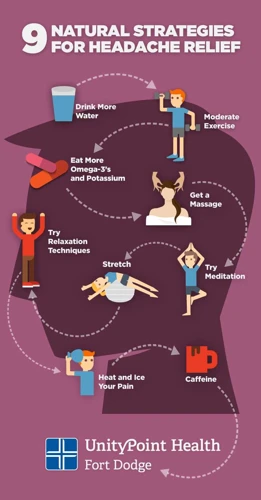
A headache is a pain, throbbing, or aching sensation in the head and/or neck region. It is one of the most common forms of physical discomfort, affecting nearly everyone at some point in their life, and can have a variety of causes.
- Primary headaches: These are not caused by any underlying diseases, but rather by abnormal brain activity, such as muscle tension, fatigue, and dehydration.
- Secondary headaches: These are caused by a specific medical condition or underlying disease, such as a sinus infection, concussion, or tumor.
- Migraine headaches: These are recurrent headaches, usually on one side of the head, and are often accompanied by nausea, vomiting, and sensitivity to light and sound.
Headaches may be mild or severe, and can last anywhere from a few minutes to a few days. For sufferers of chronic headaches, the pain can be debilitating, affecting their ability to work, sleep, and participate in daily activities.
Massage therapy is an effective and natural way to relieve headache pain. By targeting the areas of tension and tightness in the neck and shoulders, massage can help to reduce the intensity of headaches and even prevent them from occurring. With regular massage, most people can find relief from their headache symptoms and enjoy an improved quality of life.
If you are suffering from chronic headaches, it is important to speak with your doctor or massage therapist about how to massage migraine and other techniques that can help reduce your symptoms.
What is Massage?
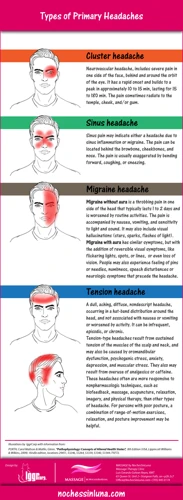
Massage is a type of physical therapy involving the manipulation of the body’s soft tissues. It is used to promote relaxation, reduce stress, pain, and muscle tension, and improve circulation. Massage may also be used to treat medical conditions, such as headaches, sciatica, and other chronic pain syndromes. Massage therapists use various techniques, including Swedish massage, deep tissue massage, trigger point therapy, and manual lymphatic drainage to help reduce pain and improve function.
The benefits of massage therapy have been well-documented in the medical literature. Studies have shown that massage can reduce stress, decrease anxiety, improve cognitive performance, and even reduce the intensity of migraine headaches. Massage also helps to relax the body, reduce tension, and improve circulation, which can help to reduce the intensity of headaches.
There are several techniques that can be used to massage for migraine relief. These include Swedish massage, deep tissue massage, trigger point therapy, manual lymphatic drainage, and cranio-sacral therapy. Each of these techniques has its own unique benefits and should be tailored to the individual’s specific needs. When massaging for migraine relief, it is important to focus on areas of tension and pain, as well as areas that are known to be headache triggers.
How Does Massage Help Headaches?
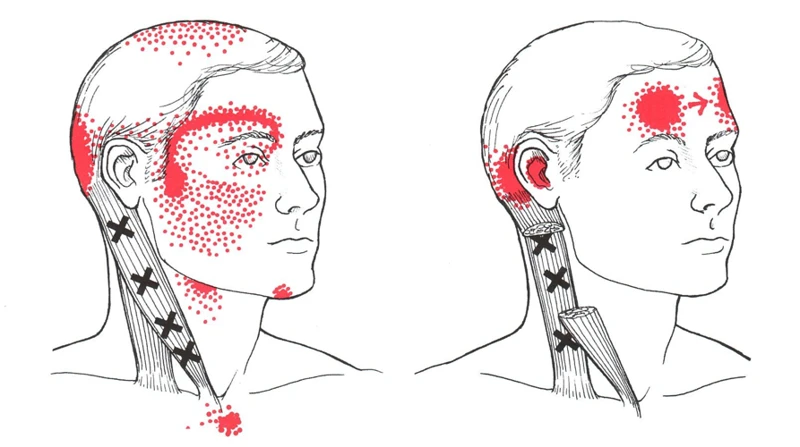
- Massage therapy has been shown to reduce headaches in some patients by decreasing muscle tension.
- Massage helps to reduce stress levels and improve circulation, both of which can help reduce the chances of a headache.
- Massage can help to relieve tension and tightness in the neck, shoulders, and head, as well as in the jaw, which can contribute to headaches.
- Massage can help to reduce inflammation in the head and neck, which can help to alleviate the pain associated with headaches.
- Massage can increase the production of endorphins, which are the body’s natural painkillers.
- Massage can help to reduce stress hormones, such as cortisol, which can cause headaches.
- Massage can help to reduce the buildup of lactic acid, which can contribute to headaches.
- Massage can help to relax the muscles in the head and neck, helping to reduce the severity of a headache.
Benefits of Massage for Headaches
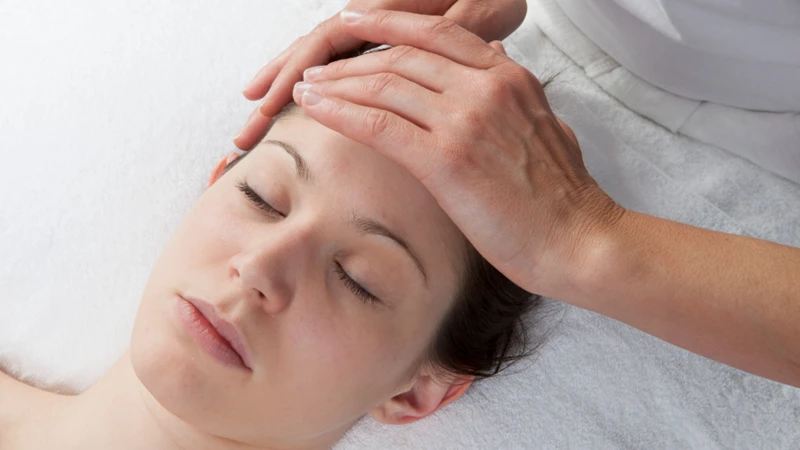
Reduced Stress: Massage has been found to reduce stress levels, which can be a major factor in triggering headaches. Studies have also shown that regular massage treatments can reduce stress levels long-term.
Increased Blood Flow: Massage can help improve circulation in the scalp, face and neck, which can reduce tension headaches and help to provide relief from migraine headaches.
Relaxation: Massage can help relax tense muscles in the neck, scalp and face that can contribute to headaches.
Pain Relief: Massage can reduce pain in the neck, scalp and face that can trigger headaches.
Release of Endorphins: Massage helps to release endorphins, the body’s natural pain reliever, which can provide relief from headaches.
Improved Sleep Quality: Massage can help reduce stress and relax the body, which can help improve sleep quality, which can help reduce headaches.
Types of Massage for Headache Relief
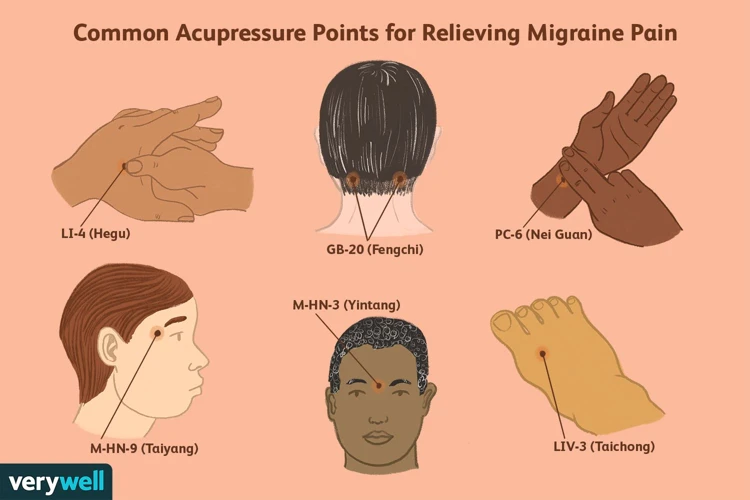
- Swedish massage: A Swedish massage is a gentle massage therapy technique that includes a combination of kneading, rolling, and tapping motions to help relax the body and reduce muscle tension.
- Trigger point massage: Trigger point massage is a type of massage that focuses on specific areas of the body, known as trigger points. Trigger points are areas of the body that can be sensitive to the touch due to chronic muscle tension or injury.
- Shiatsu massage: Shiatsu massage is a traditional Japanese massage technique that uses pressure from the thumbs, fingers, and palms to stimulate points on the body. Shiatsu massage is designed to help the body heal itself and restore balance.
- Aromatherapy massage: Aromatherapy massage is a type of massage that uses essential oils to help relax and rejuvenate the body. The oils are massaged into the skin, and their healing properties are said to help reduce stress, promote relaxation, and improve overall health.
- Hot stone massage: Hot stone massage is a type of massage that uses heated stones to relax and massage the body. The stones are used to help relieve tension in the body and to increase circulation.
How to Massage for a Migraine
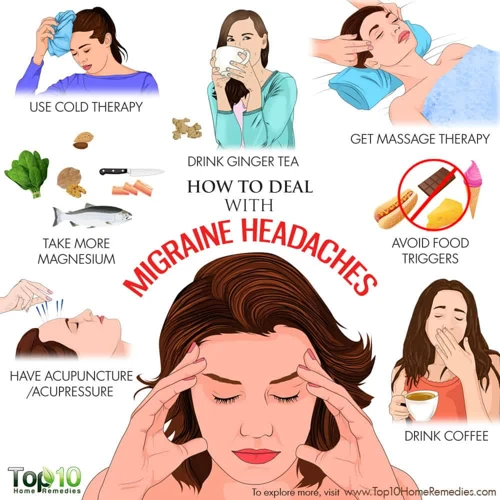
- Use Mild Pressure: Massaging your head gently with light pressure can help relieve tension and reduce discomfort. When applying pressure, use your fingertips to lightly trace circles around your temples, forehead and scalp.
- Focusing on Trigger Points: Trigger points are areas of the body that can cause pain when pressed. For migraines, the most common trigger points are located in the neck, jaw, and shoulders. Applying pressure to these areas can help reduce the pain.
- Applying Heat: Applying heat to the affected area can also help soothe the pain. Heat can be applied using a warm towel, a heating pad, or a hot water bottle. The heat helps dilate the blood vessels in the area, which can reduce the pain.
- Using Essential Oils: Certain essential oils have been found to help reduce the pain associated with migraines. Lavender oil, peppermint oil, and eucalyptus oil are all known to have a calming effect that can help reduce the pain.
- Practicing Relaxation Techniques: Relaxation techniques such as deep breathing and meditation can also help reduce the pain associated with a migraine. These techniques help reduce stress and tension, which can help alleviate the pain.
How to Massage for a Tension Headache
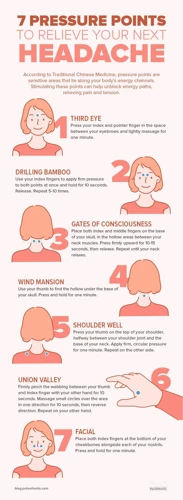
| Step | Instructions |
|---|---|
| 1 | Locate the spots on your head that feel tense or painful. |
| 2 | Apply gentle pressure with your fingertips to these areas, using a circular motion. |
| 3 | Continue to massage these areas for several minutes. |
| 4 | Move your fingers along the scalp, applying gentle pressure in a circular motion. |
| 5 | Gently massage your temples and forehead with your fingertips. |
| 6 | Continue to massage your head for up to 10 minutes. |
Massaging the head can help to relieve tension headaches. Applying gentle pressure with your fingertips in a circular motion can help to release muscle tension and reduce pain. Start by locating the areas of tension on your head and then massage them for several minutes. Move your fingers along the scalp, applying gentle pressure in a circular motion. Gently massage your temples and forehead with your fingertips. Continue to massage your head for up to 10 minutes.
Other Headache Relief Techniques
Apart from massage, there are other proven techniques to relieve headaches. These can help in both acute and chronic headaches.
Biofeedback: It is a technique to help individuals recognize and control the body’s response to stress. It helps to reduce tension and relaxes the muscles.
Relaxation Therapy: It helps to reduce stress and improves the overall sense of well-being. It can be done through deep breathing, yoga, stretching, progressive muscle relaxation, and guided imagery.
Exercise: Regular exercise helps to reduce stress, resulting in fewer headaches. Low-impact activities such as walking, swimming, or cycling can help to reduce headaches.
Acupuncture: It is a traditional Chinese medicine practice that helps to improve circulation and reduce inflammation. It also helps to reduce stress, which can help in relieving headaches.
Cognitive Behavioral Therapy: It is a type of therapy that helps to recognize and modify negative thoughts and behavior. It helps to reduce the intensity and frequency of headaches.
Herbal Medicine: There are several herbs and supplements that can help in relieving headaches. These can include ginger, feverfew, and butterbur.
Hydration: It is important to stay hydrated to reduce the intensity of headaches. Drinking enough water can help to reduce the frequency of headaches.
Sleep: Getting enough sleep is essential to reduce stress and prevent headaches. Too much or too little sleep can trigger headaches.
Stress Management: Stress can be a major trigger for headaches. Stress management techniques such as meditation, mindfulness, and yoga can help to reduce stress and prevent headaches.
These techniques can be used in combination with massage to relieve headaches. It is important to consult with a doctor to determine the best approach.
Frequently Asked Questions
What are the Most Common Types of Headaches That Can Be Relieved Through Massage?
Migraine headaches, tension headaches, and cluster headaches are the most common types of headaches relieved through massage therapy. Migraines are often described as pounding or throbbing headaches that can last for hours or even days. Tension headaches are caused by muscle tension and are often described as a tight band of pressure around the head. Cluster headaches usually cause intense pain around one eye, often accompanied by a runny nose and watery eyes. Massage therapy can help reduce the intensity of the headaches and provide relief from the pain.
How Often Should One Receive a Massage to Help with Headaches?
- Frequent Massages: Regular massage therapy sessions have proven to be effective in providing relief from headaches. It is recommended to get massages every 2-3 weeks to gain the maximum benefit.
- Longer Sessions: Longer massage sessions can help to reduce stress and tension-related headaches. Consider scheduling 45-minute or one-hour massage sessions for best results.
- Trigger Point Massage: Trigger point massage is an effective technique to target and release the specific trigger points responsible for headaches. It can be done as a single session or in a series of visits.
Are there any contraindications to massage therapy for headache relief?
Yes. Massage therapy should not be used for certain types of headaches, including:
- Headaches caused by a serious medical condition, such as meningitis, stroke or brain tumor
- Headaches of unknown cause
- Headaches caused by a recent head injury
- Headaches caused by high blood pressure
- Headaches caused by an infection
- Headaches caused by an allergy
- Headaches caused by a structural problem in the neck or spine
In addition, massage therapy may not be appropriate for individuals with certain medical conditions, such as bleeding disorders, diabetes, and certain types of cancer. People with these conditions should consult their doctor before receiving massage therapy.
Is Massage Therapy an Effective Treatment for Chronic Headaches?
- It relieves muscle tension and pain. Massage therapy helps to relax the muscles around the head, neck and shoulders which can help to reduce the severity of headaches.
- It helps to reduce stress. Stress is a major trigger of headaches, and massage can help to reduce stress and anxiety levels.
- It improves circulation. Massage can help to improve blood flow and circulation throughout the body, which can help to reduce the intensity of headaches.
- It helps to improve sleep. Poor sleep can be a cause of headaches, and massage can help to relax the body and mind, promoting better sleep.
- It can help to reduce inflammation. Massage can help to reduce inflammation in the muscles, which can help to reduce the intensity of headaches.
Studies have shown that massage therapy can be an effective treatment for chronic headaches. Massage therapy can help to reduce the frequency and intensity of headaches, as well as reduce the associated pain and discomfort. It can also help to reduce stress, improve circulation and sleep, and reduce inflammation.
How Can Massage Therapy Help Reduce the Frequency of Tension Headaches?
- Massage helps relax tense muscles. Massage therapy helps to relax the muscles in the neck, shoulders, and head, which can help to reduce the frequency and intensity of tension headaches.
- Improved circulation. Massage therapy can improve circulation and help to reduce inflammation, which can lead to less frequent and less severe headaches.
- Reduced stress. Massage can reduce stress and anxiety, which can also lead to fewer tension headaches.
- Relief from trigger points. Massage can help to reduce the pain associated with trigger points, which can lead to fewer headaches.
Conclusion
Massage is a natural, non-invasive way to relieve headache pain. It is a safe and effective treatment, with benefits that can last for days or weeks. It is also a great way to reduce stress and tension and improve mood. Massage can be used in combination with other treatments to provide relief from headaches, including medications, lifestyle changes, and relaxation techniques. If you suffer from headaches, consult your healthcare provider to determine if massage can be a beneficial part of your treatment plan.

